Current Research & Open Questions
My research utilizes instrumental observations along with general circulation models of the atmosphere and oceans to improve our understanding of climate and carbon cycle variability. These methods are complemented by the use of simple conceptual models and dynamical systems theory approaches to better understand the fundamental dynamics of observed climate variability and change. Furthermore, I am interested in the development of statistical methods and their correct application to climate data.
I am also actively participating in high-resolution coupled climate modeling to gain better understanding of how small-scale coupled processes and large-scale climate variability interact, as well as in the development of a new Large Ensemble project to investigate the emergence time of forced extreme event changes.
- What are the dynamics of internal modes of climate variability such as the El Niño-Southern Oscillation (ENSO) and the dynamics of emerging greenhouse warming patterns?
- How can we improve seasonal rainfall and associated water availability predictions in the population-rich areas of the tropics and Monsoon regions?
- How
will extreme events (such as marine heatwaves or heavy
rainfall) change in a warming climate?
- How
are the tropics dynamically connected to the higher
latitudes and the cryosphere?
- How are natural modes of climate variability connected to the marine carbon cycle?
- How relevant are past climate states as analogues for the future, and can we expect fundamental changes in the characteristics of natural climate variability in response to greenhouse warming?
- How can we use our understanding of fundamental climate dynamics to assess and mitigate climate impacts on society and economical systems, caused for instance by regional sea level changes and changes in flood or drought occurrences?
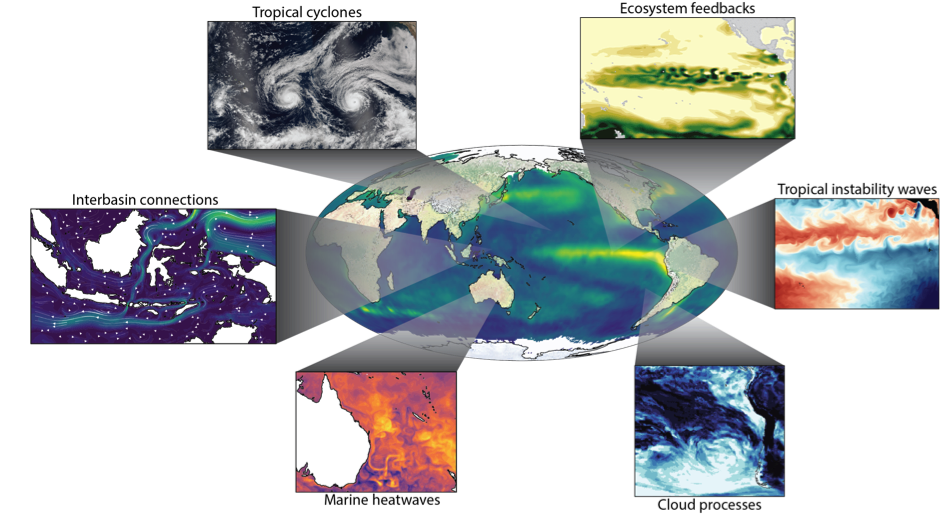
Figure from Karamperidou et al. (2020)
-
Selected Scientific Contributions
¤ Developed a Green's function method for the coupled
climate system that allows to delineate coupled local
feedback and remote drivers for climate change in a given
region.
Major References: Stuecker et al.
2028 (Nature Climate Change), Stuecker et al. 2020 (Nature
Climate Change)
¤ Showing that future warming in the
tropics is caused to a large degree by heating occurring in
the subtropics. Highlighting the importance of the coupling
between clouds and the circulations in the atmosphere and
ocean in determining regional climate change patterns.
Major Reference: Stuecker et al. 2020
(Nature Climate Change)
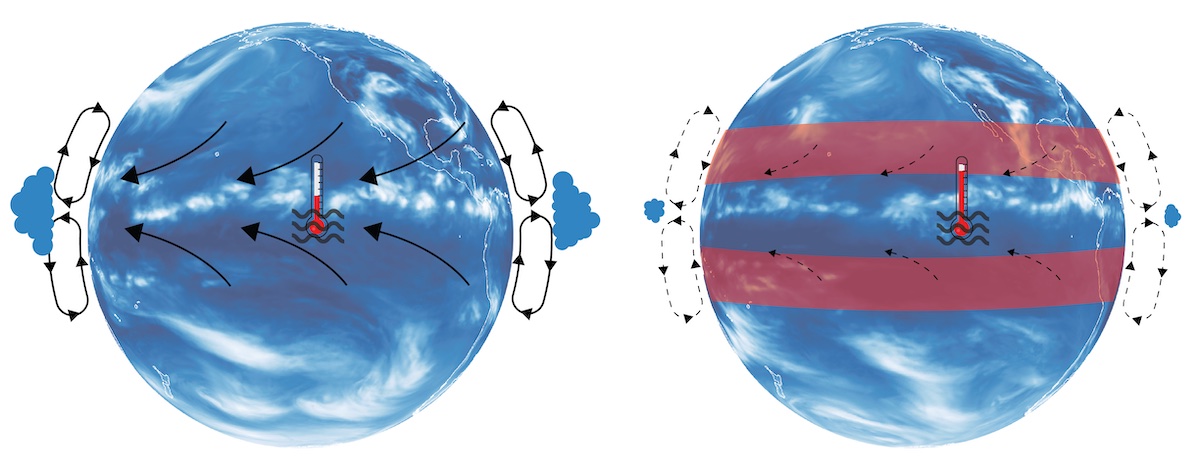
¤ Demonstrating that polar amplification in response to
greenhouse gas forcing is dominated by polar forcing and
feedbacks and that atmospheric heat transport from the
tropics plays a minor role (in the coupled system) with a
novel coupled model hierarchy. Furthermore, showing that the
relative importance of polar feedbacks depends strongly on
the spatial pattern of the forcing.
Major Reference: Stuecker et al. 2018
(Nature Climate Change)
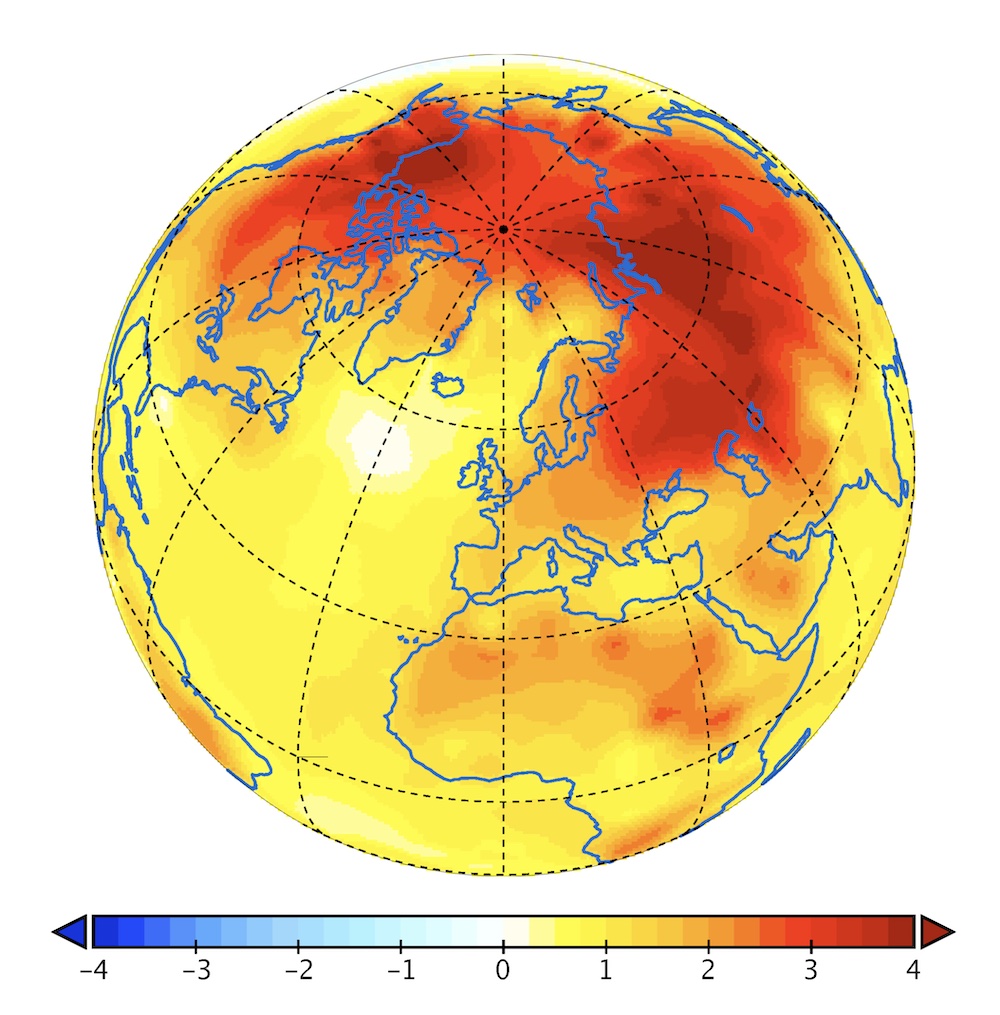
¤ The discovery of a new mode of tropical
climate variability -- the ENSO combination mode (C-mode) --
that arises from the interactions between ENSO and the
annual cycle. It is characterized by spatial patterns,
timescales (i.e. combination tones), and climate impacts
that differ significantly from those that we canonically
prescribed to ENSO. Important impacts of the C-mode include
among others: East Asian Monsoon variability, large-scale
shifts of the South Pacific Convergence Zone, and sea level
induced coral die-offs in the South Pacific.
Major Reference: Stuecker et
al. 2013 (Nature Geoscience)

¤ Demonstrating that thermodynamic air-sea
coupling is only of secondary importance for the
establishment of the anomalous Western Pacific Anticyclone,
thereby fundamentally revising how ENSO impacts the East
Asian Monsoon system.
Major References: Stuecker et al. 2015
(Journal of Climate), Stuecker et al. 2016 (Journal of
Climate)
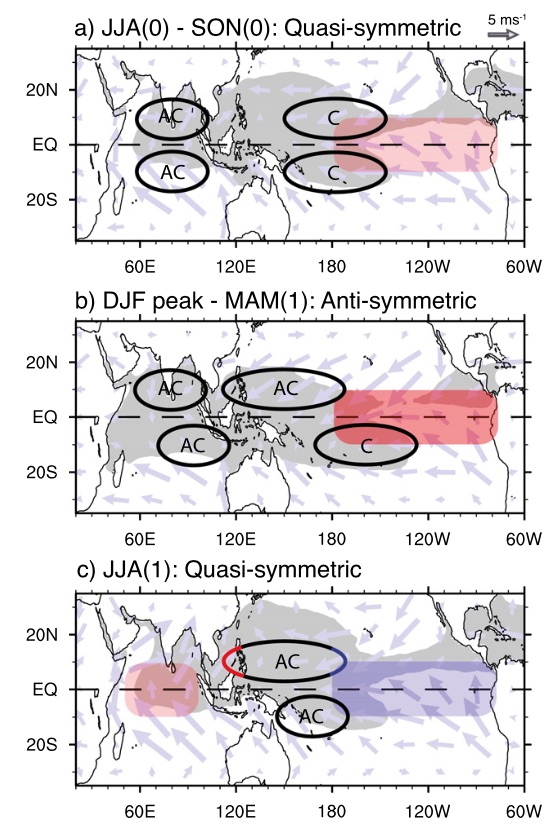
- ¤ Formulating a new hypothesis for the observed power
spectrum of atmospheric variables. Demonstrating that a
lot of atmospheric variability on timescales between
several months and several years is due to ENSO and its
interaction with the warm pool annual cycle.
Major Reference: Stuecker et al. 2015 (Proceedings of the National Academy of Sciences)

¤ Showing that the Tropospheric Biennial Oscillation
(TBO) is indistinguishable from a white noise null
hypothesis in both observational data sets and the CMIP5
model experiments when using the traditional TBO definition.
Major Reference: Stuecker et al. 2015
(Geophysical Research Letters)
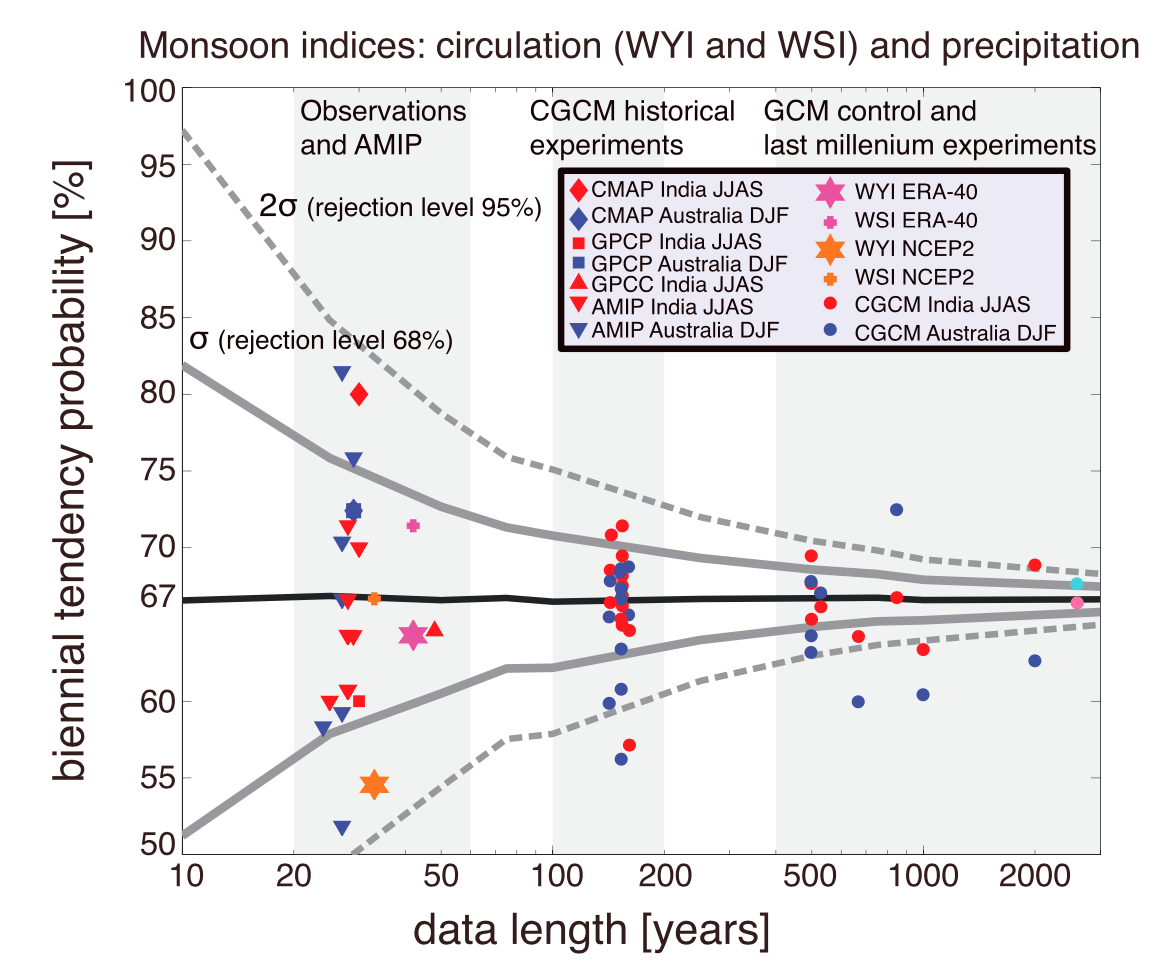
¤ Demonstrating that the Pacific Meridional Mode (PMM)
arises as a response to equatorial SST anomalies near the
dateline associated with Central Pacific (CP) ENSO events,
thus calling into question the idea of the PMM being an independent
ENSO precursor. Instead, I propose an interactive
positive feedback between CP ENSO SST anomalies
and the off-equatorial PMM pattern, in which either signal
reinforces the other.
Major Reference: Stuecker 2018
(Scientific Reports)
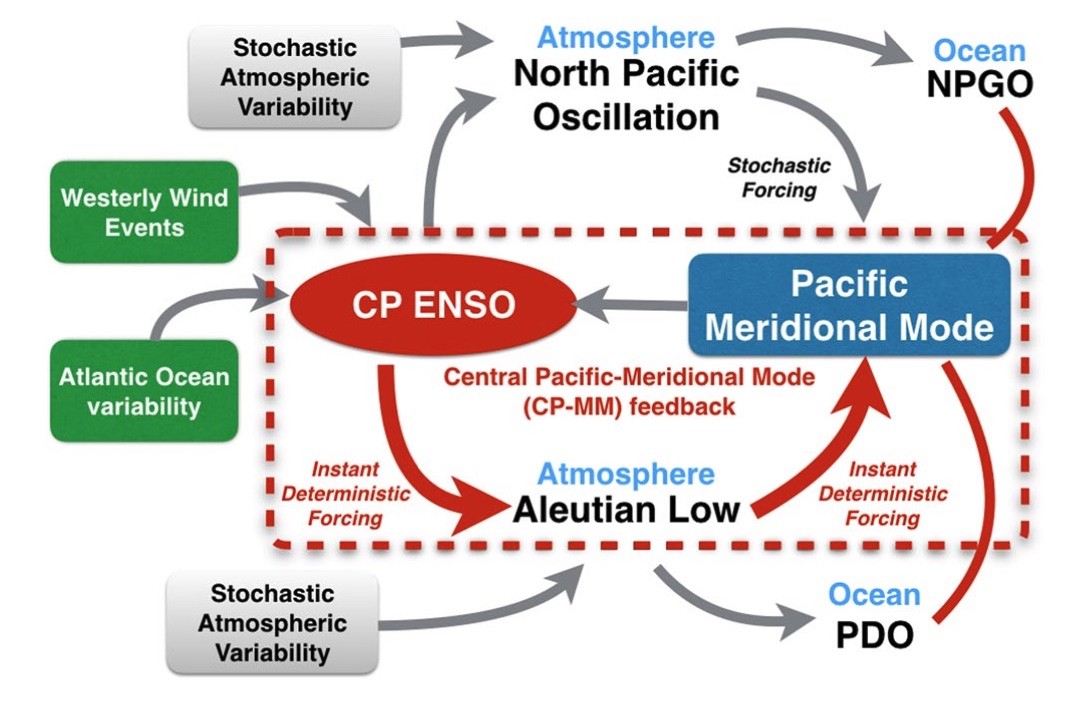
¤ Formulating the interaction between climate
variability in the Atlantic Ocean and the Pacific via
Trans-Basin-Variability (TBV). Demonstrating that TBV was an
important factor for the recent hiatus in global mean
surface temperatures. Furthermore, showing that mean state
biases in the Atlantic can explain why CMIP5 models do not
simulate TBV and the recent hiatus SST pattern realistically
and why they tend to underestimate decadal variability.
Major Reference: McGregor et al. 2014
(Nature Climate Change), McGregor et al. 2018 (Nature
Climate Change)
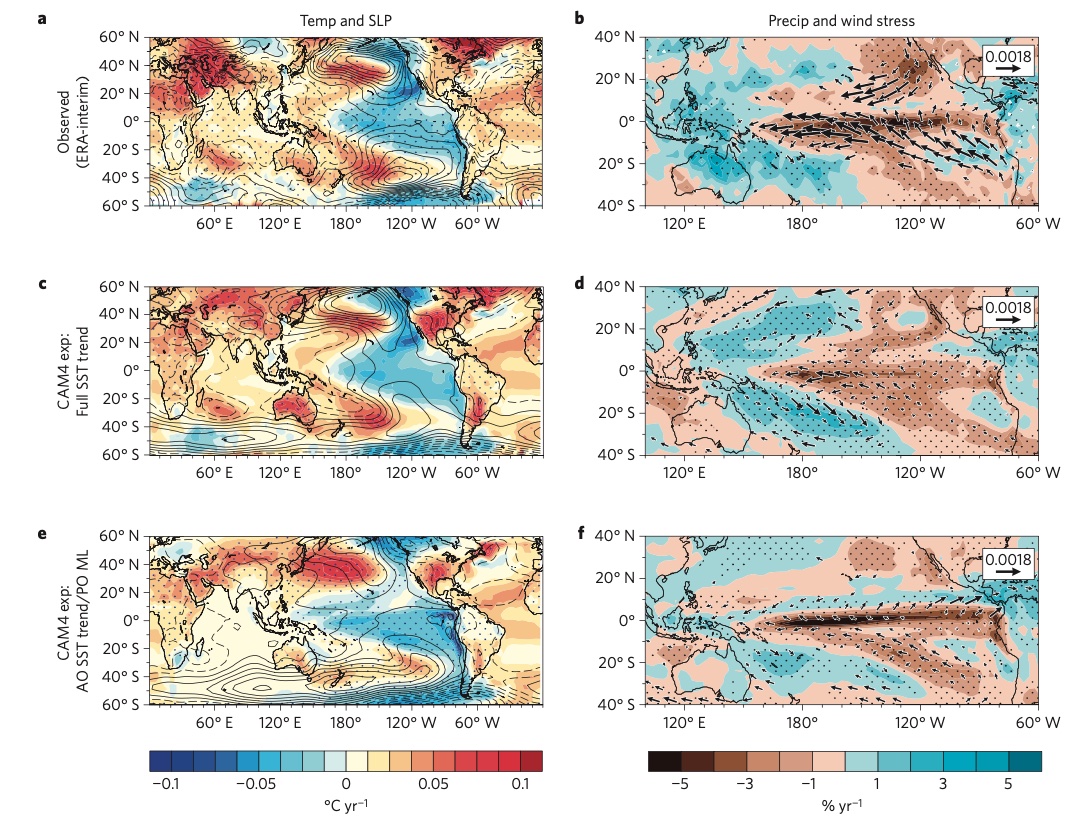
¤ Developing a new formalism for the interpretation of
observed lead/lag correlation relationships between ENSO and
the Indian Ocean Dipole (IOD). Further demonstrating that
seeing a lead time of the IOD in these correlations can be
re-reconciled with ENSO actually causing the IOD. Developed
new statistical-dynamical model (SDM) IOD prediction system
with superior skill based on these results.
Major Reference: Stuecker et al. 2017a
(Geophysical Research Letters), Zhao et al. 2019,2020
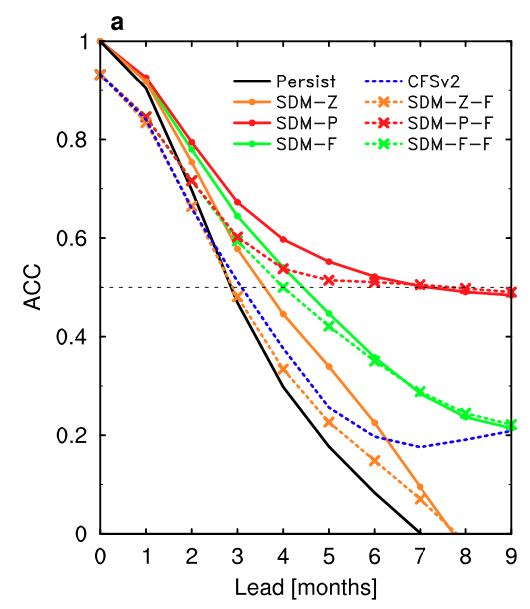
¤ Demonstrating what conditions lead to the
unprecedented record low Antarctic sea ice extent during the
2016 austral spring season.
Major Reference: Stuecker et al. 2017b
(Geophysical Research Letters)

